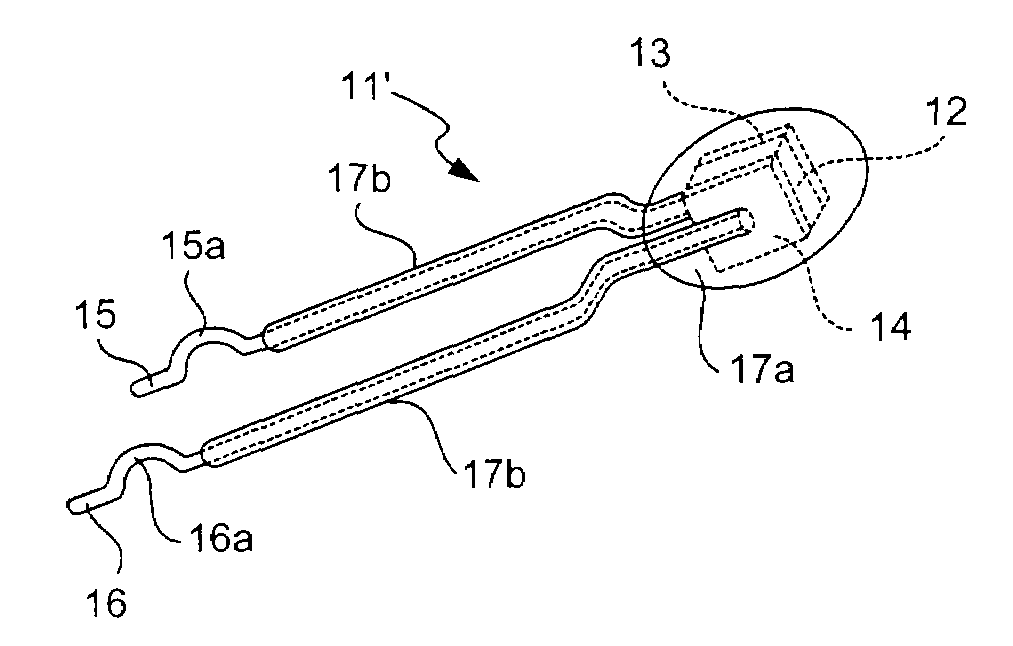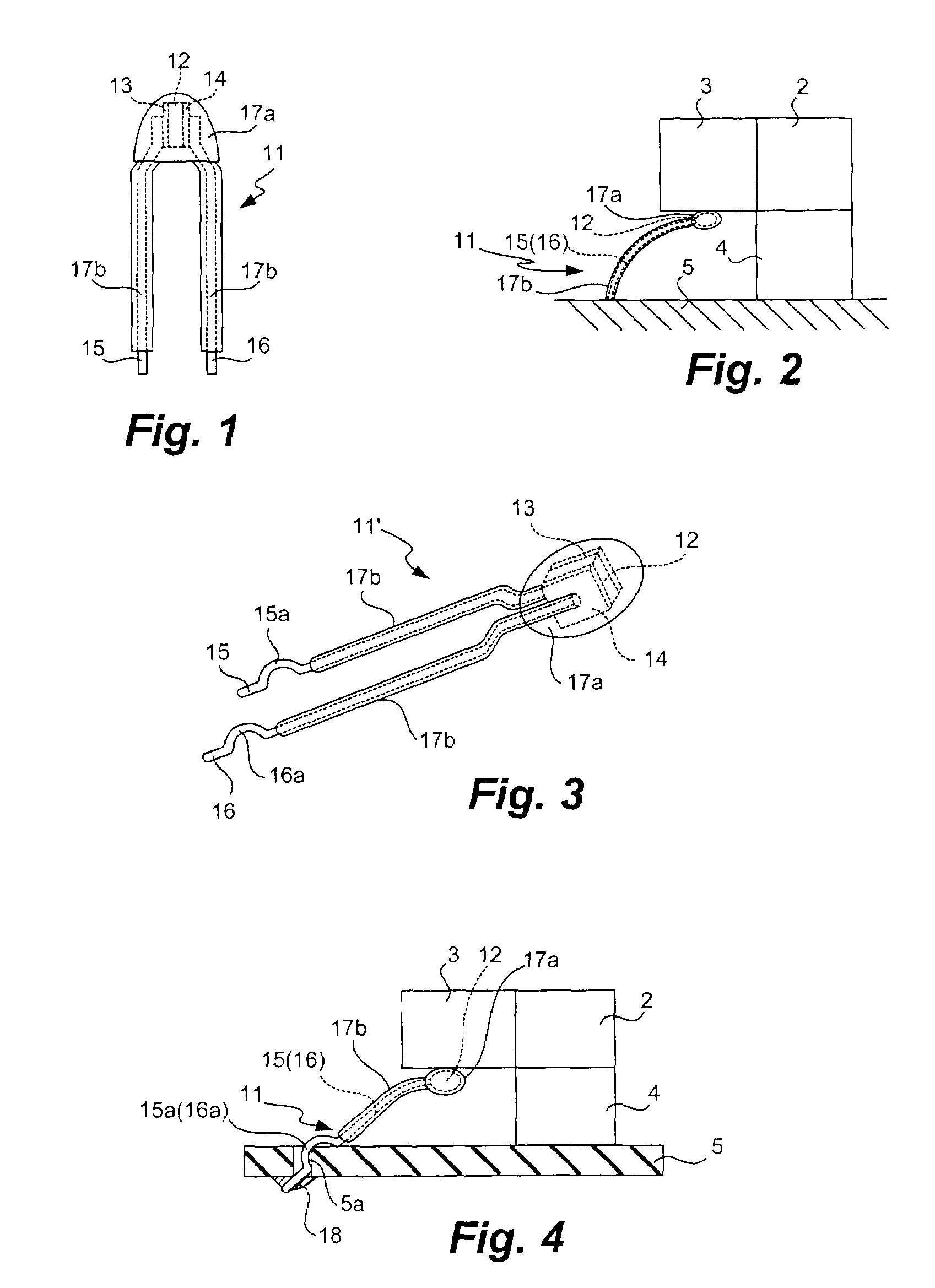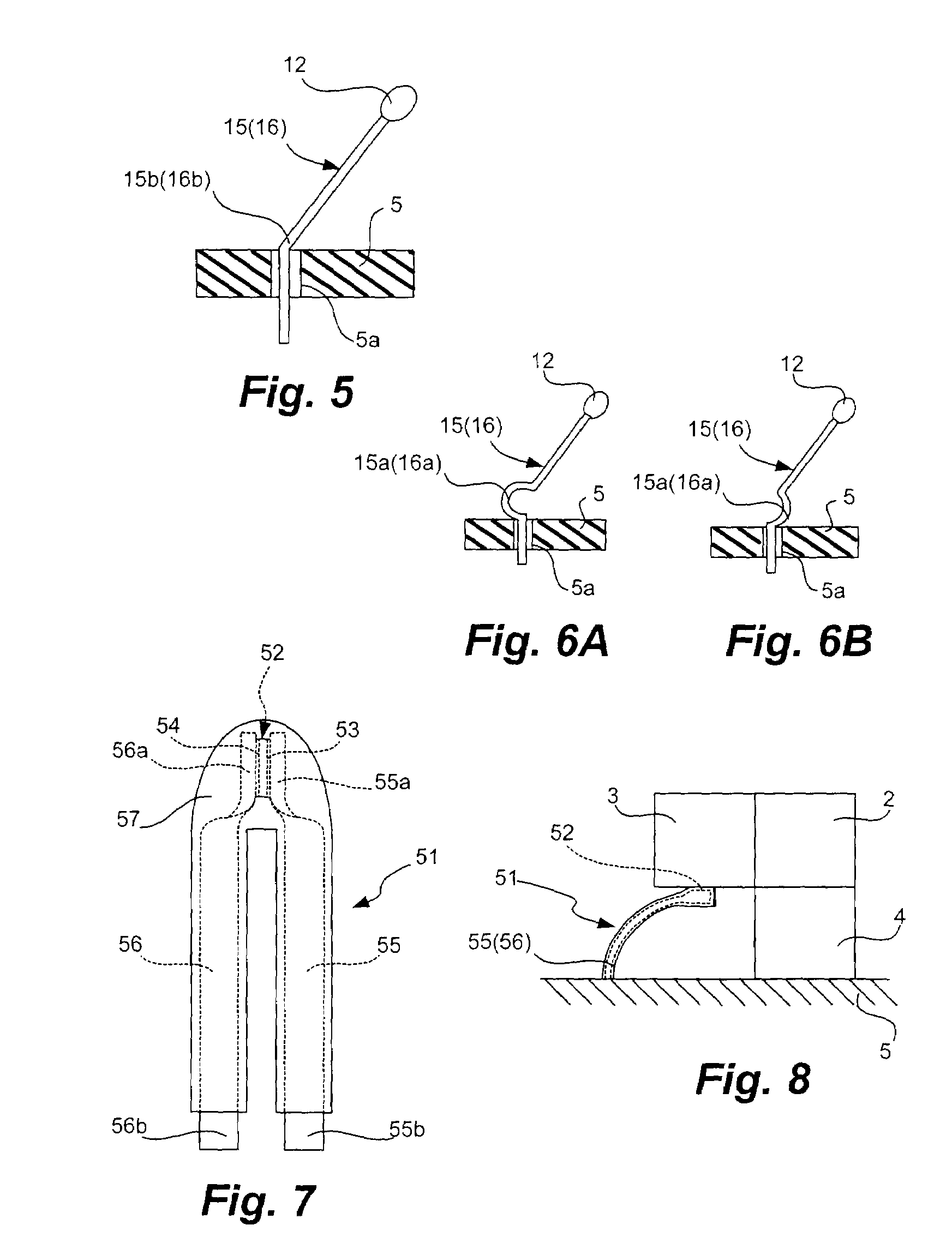Temperature sensor
a technology of temperature sensor and polarizer, which is applied in the direction of positive temperature coefficient thermistors, instruments, heat measurement, etc., can solve the problems of inability to position stably with respect to the tip section, and difficulty in making accurate temperature detection
- Summary
- Abstract
- Description
- Claims
- Application Information
AI Technical Summary
Benefits of technology
Problems solved by technology
Method used
Image
Examples
first embodiment
[0028]If the lead lines 15 and 16 are simply inserted into throughholes (not shown) through the printed circuit board 105 in a direction more or less perpendicular to its surface and the CPU 2 with the DC fan 3 is lowered from above after the temperature sensor 11 is fastened to the circuit board 5 (say, by soldering), the lead lines 15 and 16 may fail to bend in the desired direction or be crushed by the vertical downward force. According to a preferred variation to the invention, as shown generally at 11′ in FIG. 3, kinked parts 15a and 16a are provided respectively to the lead lines 15 and 16 where the lead lines 15a and 16a are bent in the same direction in a nearly semi-circular arcuate form, each of the kinked parts 15a and 16a being sandwiched between two mutually colinearly extending portions. The second outer cover 17b according to this embodiment is made somewhat shorter so as not to cover the kinked parts 15a and 16a for the convenience in the operations for mounting the ...
second embodiment
[0034]FIG. 7 shows a temperature sensor 51 according to this invention, comprising an NTC thermistor element 52 having a pair of terminal electrodes 53 and 54 formed on its mutually oppositely facing main surfaces, lead terminals 55 and 56 each with its top end parts 55a or 56a attached to a corresponding one of these terminal electrodes 53 and 54 (say, by a solder material (not shown)) and an outer cover 57 of an electrically insulating resin material covering the thermistor element 52 and the lead terminals 55 and 56 except their bottom end parts 55b and 56b. The NTC thermistor element 52 may not necessarily be in the shape of a chip but may be planar, for example, of a circular disk shape.
[0035]The lead terminals 55 and 56 may comprise phosphor bronze with hardness ½H and are planar, having a rectangular cross-sectional shape. The material for the lead terminals 55 and 56 may also be german silver, beryllium, SUS, a Cu—Ti alloy, brass or any of these with plating. The lead termin...
PUM
| Property | Measurement | Unit |
|---|---|---|
| thickness | aaaaa | aaaaa |
| angle | aaaaa | aaaaa |
| angle | aaaaa | aaaaa |
Abstract
Description
Claims
Application Information
 Login to View More
Login to View More - R&D
- Intellectual Property
- Life Sciences
- Materials
- Tech Scout
- Unparalleled Data Quality
- Higher Quality Content
- 60% Fewer Hallucinations
Browse by: Latest US Patents, China's latest patents, Technical Efficacy Thesaurus, Application Domain, Technology Topic, Popular Technical Reports.
© 2025 PatSnap. All rights reserved.Legal|Privacy policy|Modern Slavery Act Transparency Statement|Sitemap|About US| Contact US: help@patsnap.com



